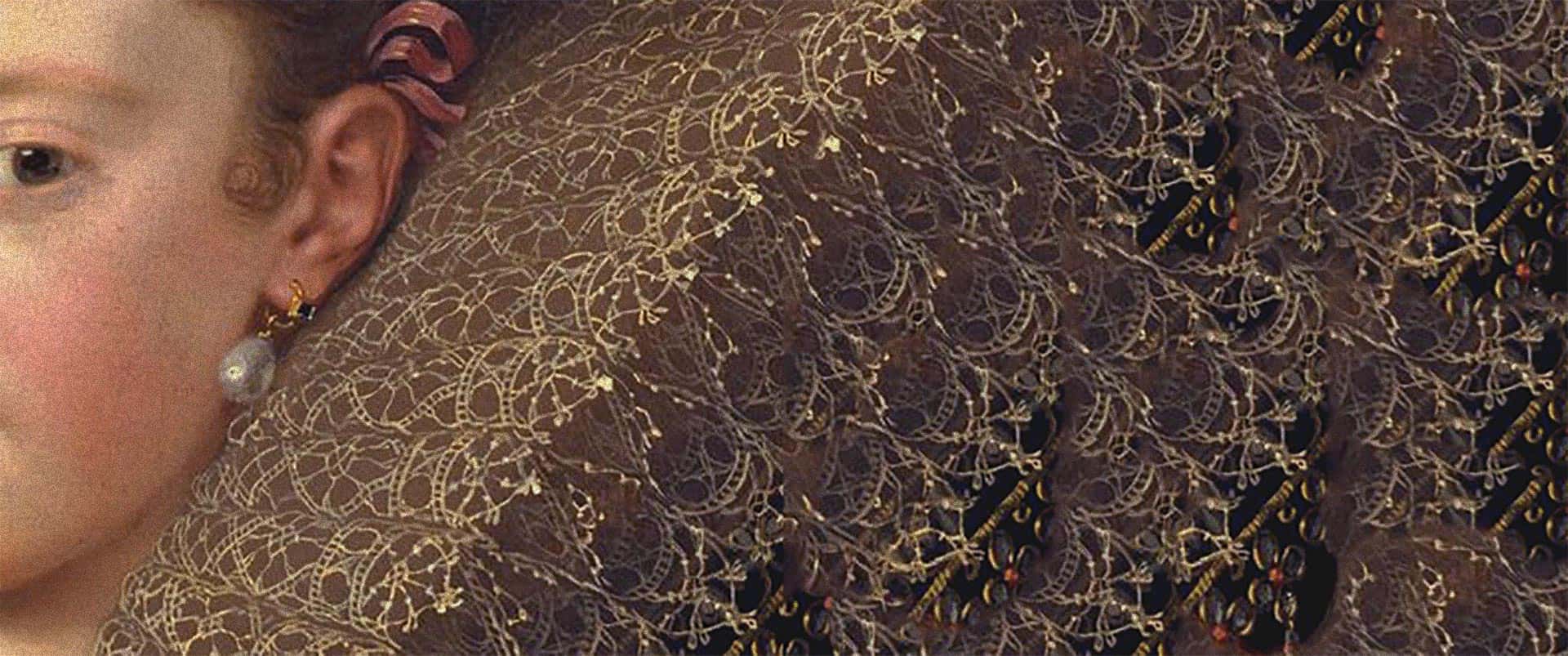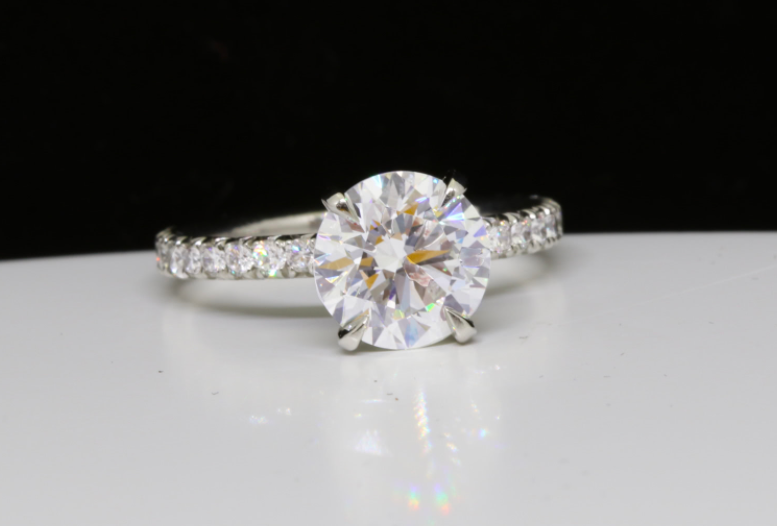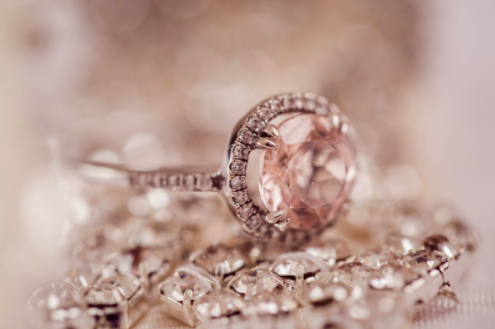Come Visit Us
- Monday 11:00–6:00
- Tuesday 11:00–7:00
- Wednesday 11:00–7:00
- Thursday 11:00–7:00
- Friday 11:00–7:00
- Saturday 10:00–4:00
- Sunday closed


Last week I came across aNY Times articlethat breaks down the elements that actually make a diamond. This short article got me thinking about the difference between man made vs. naturally occurring diamonds, and the confusion around both. Below I’ve shared my thoughts on this.
A man made or lab made diamond is omitting the timelessness and everlasting value a naturally occurring diamond possesses. It takes away the precious scarcity and value that has made today’s diamonds so popular and desired. Although to the naked eye, these so-called diamonds may look similar, they are quite fake and unfortunately do not hold their value. Also, rarely talked about is the fact that these man made “diamonds” actually give off a blue hue.
Imagine years later passing down a lab made stone...one that no longer holds its value due to how common it is to create. Now imagine passing down a family heirloom diamond, one that no matter how old or dusty it becomes, remains timeless. A prized treasure for generations to come. It’s the scarcity and naturally occurring timeless beauty you are purchasing when you seek out a precious diamond gem.
As this article states, “Just as one cannot compare an original painting to a reproduction, one cannot compare a diamond to a manufactured replica”. In order to be called a diamond it must be naturally occurring.
Trends around diamond shape, diamond settings, and gem color may come and go, but the beauty that is of a true diamond is everlasting.
Have questions or comments? Share them them below, we’d love to hear from you.
-LB
If you happen to keep a pulse on diamond industry latest news, it’s likely you heard about Pandora, a jewelry charm company’s latest announcement regarding their “honorable” venture to only use lab made diamonds for environmentally friendly reasons.
At a first glance these headlines make this decision seem responsable, even honorable, but in further unearthing the claims Pandora makes, it’s quite evident that the only thing they have successfully done is fooled the mainstream media, lost the trust of future customers, and made a mockery of themselves.
Are Lab Grown and Naturally Occurring Diamonds Really The Same?
The first claim they make is that lab made diamonds have similar properties to that of a naturally occurring diamond. In actuality, a lab-grown diamond is a man-made product that shares the chemical and optical properties of natural diamonds, but whose origin and value differ greatly.
Lab-grown diamonds are produced in factories in approximately 2-3 weeks using one of two methods originally developed in the 1960s for industrial purposes – HPHT and CVD. These methods artificially replicate natural conditions found in the Earth, forcing carbon atoms into a crystal structure. In more recent years, technology improvements have allowed factories to produce lab-grown diamonds in qualities that allow for uses beyond industrial. (Source)
Although their chemical structure is the same as a natural diamond, according to the Federal Trade Commission (FTC) a lab-created diamond cannot be called “real” because it does not come from the Earth and it is not a gemstone. (Source)
Only a natural diamond has the rarity that supports its economic and emotional value. Consumers use diamonds as a symbol of love for that very reason. We all want to feel special, unique and rare, especially in our relationships, and a diamond communicates that message.(Read more on this topic)
But people buy diamonds because they know they are literally buying a piece of the earth- a precious gem that was fostered over the course of millions of years, and then transformed by artisans and professionals into a beautifully shining stone. This is the value and the magic carried out by natural diamonds, and purchasing a diamond means respecting the way nature intended it to be formed.
Alternatively, what value does a man made diamond carry? The rough material is made in machines and machines can transform them into polished stones like cookie cutters because not a lot of work is needed around a pattern similar to that of a waffle- and you already know what it’s composed of.
Man made diamonds carry the same value as any other machine made products, while diamonds carry an almost priceless value. Something that can be cherished for generations. (Read more about this topic)
Are Lab Grown Diamonds Better For the Environment?
Pandora wastes no time positioning lab made diamonds as an “ethical choice,” versus natural diamonds. It’s quite ironic that they should bring ethics into what could be considered the diamond industries greatest marketing ploy in quite some time, especially considering Pandora used mined diamonds in about 50,000 of the 85 million pieces it created in 2020.
This misleading narrative has conveniently left out the fact that diamond mining is generally less harmful to the environment than other types of mining. Additionally, the orebodies used in mining are vertical not horizontal, ultimately affecting less of the surrounding area. Many companies have established protected habitats adjacent to their operations, often times larger than the mining operation itself.
The isolated nature of diamond mines means the workforce lives close by and develops a community spirit, which the diamond industry supports by investing in hospitals, schools, training and bursary programs.
For example, 33% of Botswana’s GDP comes from diamond mining, and an estimated five million people globally have access to health care thanks to diamond revenues, according to diamondfacts.org.
Today’s mining is not done by hand but is quite automated with miners moving millions of tons of rocks per year. Miners operating large earth loaders in open pits or underground would never even see a diamond. (Read more on this topic)
What About The Future of the Diamond Industry?
We’re reaching a point in our industry where lines are being drawn in the hypothetical man made versus lab made diamond sand. Customers will have no choice but to decide if they’re for or against the marketing manufactured narrative relating to lab made diamonds, and the type of impermanence they offer, or if they believe in the true value of a man made diamond.
It will likely come down to what feels right for you as an individual and what tangible legacy you’re hoping to leave behind. A family heirloom perhaps?
Coaching individuals through decisions such as these is what we pride ourselves on, and have been doing for the last 10 years. (Read more on this topic)
At La Bijouterie, we never work with conflict diamonds. We strictly work with ethically sourced GIA certified diamonds, and you will receive a GIA certificate and appraisal with your jewel. We’ve worked in the diamond wholesale business for generations and only work with trusted and ethical sources.
If you’re not sure where to begin in your quest for a diamond, come talk to us. What we pride ourselves on most is educating individuals and helping you make decisions in a no pressure environment. You can book an appointment today or read our client reviewson Yelp.
We’re always at your service,
Set F.
Founder of La Bijouterie
“I do not believe you can do today’s job with yesterday’s methods and be in business tomorrow.”- Horatio Nelson Jackson, American Physician and Automobile Pioneer
At La Bijouterie, we believe in innovation, as it’s the key to success in almost any industry. When Lab Grown Diamonds (LGD) joined the greater diamond discussion a few years ago, we knew it was time to start educating our customers in new ways, and share the depth of knowledge we have about the diamond industry as a whole. It was time to focus on the future. Because of this, we have an obligation to be upfront and factual in the information we share, and present it in a way that is unbiased and educational as it relates to Lab Grown vs Real Diamonds.
Educating our clients brought up many questions, but one in particular we feel is worth a longer explanation...
What place does a lab made diamond have in the future, especially compared to real, naturally occurring diamonds?
Our hope is this blog post will be part of that greater conversation for you. Know that the best way to find out the answer to this question is to book a virtual or in-person 1:1appointment to further the discussion in order to make your own educated decision. Then you will have the opportunity to ask as many questions as you’d like.
What is a Lab Grown Diamond (LGD)?
A lab-grown diamond is a man-made product that shares the chemical and optical properties of natural diamonds, but whose origin and value differ greatly. Lab-grown diamonds are produced in factories in approximately 2-3 weeks using one of two methods originally developed in the 1960s for industrial purposes – HPHT and CVD. These methods artificially replicate natural conditions found in the Earth, forcing carbon atoms into a crystal structure. In more recent years, technology improvements have allowed factories to produce lab-grown diamonds in qualities that allow for uses beyond industrial. (Source)
So Are LGDs Actual Diamonds?
Although their chemical structure is the same as a natural diamond, according to the Federal Trade Commission (FTC) a lab-created diamond cannot be called “real” because it does not come from the Earth and it is not a gemstone. (Source)
By this point, you may be feeling confused. How are you supposed to make a decision on whether to move forward with a naturally occurring diamond, (and which one?) vs one that is Lab Grown? Why is the word diamond in the title if they are not in fact diamonds? Do real diamonds hold their value? What about pricing? The environment?
Other Expert Opinions
In trying to differentiate natural diamonds from the lab grown alternative, theNatural Diamond Council quite truthfully underscores natural diamonds rarity.
“Natural diamonds are finite and rare. Diamonds are becoming rarer every day because no new significant deposits have been discovered in about 30 years,” it states. “However, lab-grown diamonds can be manufactured in potentially unlimited quantities similar to any manufactured product, thus they are not finite and cannot be considered rare.”
To which, the NDC adds, “Natural diamonds obtain their value from their scarcity as a natural, billion-year-old precious gem and have shown over decades to grow in value as they become more rare.”
There are a lot of things to consider here, and we’ve found one of the most important things to consider is Price vs Value.
Price vs Value
In its 2019 report, Bain gave more specifics, noting the lab-grown market grew 15% to 20% in 2019, following a similar trajectory in 2018.
That increase is credited to “the widening price differential of lab-grown diamonds versus natural ones and campaigns that leveraged the ‘green’ benefits of manufactured stones,” the report states.(Source)
When it comes to value, you can’t put a price on rarity. As basic economics states, once demand goes up, and inventory goes down, price goes up. So where does this leave us, as each claim they are better than the other for different reasons? More importantly, where does the future of Lab Grown Diamonds lie? Well that answer is entirely up to you as the consumer.
At La Bijouterie, our sole purpose is to help couples achieve a milestone moment in their lives any way we can. We believe in quality over quantity, and educating always. Before pulling the trigger on such an important decision,book a no stress 30 minute 1:1 appointment.
At Your Service,
Set F.
Founder, La Bijouterie

You’re about to make the biggest purchase of your life, yet wish you could clarify a few questions and clear up a few rumors you have heard about the diamond industry as a whole. Well look no further because we’re debunking some of the common misconceptions in hopes you breathe a sigh of relief.
Myth: Diamond mining is terrible for the environment
Reality: Considering little to no chemicals are used during diamond mining, (which would otherwise be harmful to the staff’s health), diamond mining is generally less harmful to the environment than other types of mining. Additionally, the orebodies used in mining are vertical not horizontal, ultimately affecting less of the surrounding area. Many companies have established protected habitats adjacent to their operations, often times larger than the mining operation itself.
Myth: There is a high chance that you could buy a conflict diamond
Reality: One of the most popularized myths of all is the issue of conflict diamonds — or “blood diamonds”. During the brutal civil wars in Sierra Leone and Angola in the 1990s, the diamond industry has made great strides given what this time unveiled. Since the introduction of the Kimberley Process (KP) certification scheme and the World Diamond Council (WDC) System of Warranties, more than 99.8% of the world’s diamonds are certified conflict-free, with the support of 81 countries.
Today the industry is mostly self-regulated, and various countries have additional layers of government regulation in place. The UK’s Government Diamond Office, for example, works closely with HM Revenue & Customs, the European Commission and civil groups to combat illicit diamonds.
Additionally, there are voluntary and self-regulation systems that are effective in maintaining the diamond pipeline. Like most jewelers, we want to ensure our customers have the confidence to know that our source of supply is conflict-free. Additionally, may jewelers subscribe to the Responsible Jewelery Council, De Beers’ Best Practice Principles, and the Signet Responsible Sourcing Protocol.
Myth: The diamond industry is a monopoly, owned by De Beers.
Reality: The good news is no one company has had controlled the market for decades. This myth dates back to the 1980’s when De Beers did indeed control over 90% of the supply chain and was almost wholly responsible for marketing diamonds, having developed its famous “A Diamond Is Forever” slogan in the 1940s. This also led to the perception that De Beers “invented” the diamond engagement ring, when in fact the first was recorded as early as 1477 byArchduke Maximillian of Austria, who commissioned the very first diamond engagement ring on record for his betrothed, Mary of Burgundy.
By the 1990s, the market for new mining companies opened, breaking the hold that De Beers and Alrosa had on the industry and ushering in a new wave of diamond discoveries in Angola and Canada, according to Pouroulis.
Today De Beers company share of the diamond market is closer to 35%, while five other companies divide the remaining 65% of diamond share.
Myth: Diamond mining individuals and communities are mistreated and at-risk
Reality: To first understand why this myth is so false, you must first understand how the mining process works and how much diamond mines actually help strengthen a community. The isolated nature of diamond mines means the workforce lives close by and develops a community spirit, which the diamond industry supports by investing in hospitals, schools, training and bursary programs.
For example, 33% of Botswana’s GDP comes from diamond mining, and an estimated five million people globally have access to health care thanks to diamond revenues, according to diamondfacts.org.
Today’s mining is not done by hand but is quite automated with miners moving millions of tons of rocks per year. Miners operating large earth loaders in open pits or underground would never even see a diamond.
Myth: The diamond industry is secretive and closed to outsiders and not to be trusted.
Reality: This myth simply stems from a place of fear. The high-value nature of diamonds may be to blame for the presumption that the industry is filled with inaccessible people and organizations, more comfortable with secrecy than transparency. The reality is there is a whole spectrum of hard-working people all at different levels of financial success. Just like any business, success in the diamond industry is all dependent on how a business has been built.
It’s not uncommon for society to expect to see businesses reporting on their social activities, financials and stakeholders to increase transparency and trust. This shift in societal expectation has created major changes in the diamond sector for the better - more transparency and more trust.
You might also be pleased to know that diamond retailers such as De Beers are not sitting on stockpiles of diamonds nowadays, but instead build up inventory before making a sale as any retailer would.
Have a question that wasn’t addressed above? Leave us a comment below!
~ LB

History has a funny way of repeating itself, and the man-made diamond industry is no exception. If you’re familiar with the simple rules of supply and demand, then you understand that as supply goes up, demand goes down. Applying this same rule to man-made diamonds, you can quickly understand why it will be hard for them to maintain their long term value.
From the Experts
But don’t just take our word for it, on Dec. 21, 2018, a Reutersreport quoted analyst Paul Zimnisky as saying lab diamond prices had softened considerably. Another report fromBain & Co. stated the “Production of lab-grown diamonds has risen dramatically and will continue to do so, though their prices will likely continue to fall.”
This report mentions that “It costs $300–$500 per ct. to produce a CVD lab-grown diamond, compared with $4,000 per ct. in 2008, and calculates that the retail price of gem-quality lab-grown diamonds has fallen by about half in the past two years, while wholesale prices have fallen threefold. It forecasts that trend will continue as efficiencies increase, new competitors enter the market, and the product gets “commoditized.”
As the manufacturing technology for these lab-made diamonds improves, the stones’ prices will decrease. One jeweler remembers when cubic zirconia was $800 per ct. Created gems are, like created diamonds, chemically the same as their mined counterparts. But their values are very different. Unlike the earth, which has a limited supply of diamonds, factories can mass-produce these stones, and that will drive prices down in the long run. (JCK)
Held to the Same Standards
If these man-man diamond resellers are selling their goods as diamonds, or, put another way, if man-made diamonds we’re true diamonds, then they should: (JCK)
But What About the Environment?
There is a common misconception that lab made diamonds are more eco-friendly. You see in order for a lab made diamonds to be created, it actually involves more chemicals and electricity consumption and is worse for the environment than those that are naturally occurring. Not to mention unregulated laborers. This topic rarely touches on the other side- the communities in Africa that heavily rely on the diamond business for their wellbeing - it is often their family business. “Tens of millions of people rely on the diamond industry for income, among them the poorest people on earth trying to make an honest living. There are an estimated 1.5 million artisanal miners digging for diamonds in Africa, and they support another 7 million people with their earnings. Advocating synthetics as an ethical substitute for natural diamonds threatens the livelihood of those diggers.” (Rapaport)
Ethically Sourced Only
At La Bijouterie, we never work with conflict diamonds. We strictly work with ethically sourced GIA certified diamonds, and you will receive a GIA certificate and appraisal with your jewel. We’ve worked in the diamond wholesale business for generations and only work with trusted and ethical sources.
If you are against buying diamonds, or perhaps a diamond is simply not in your repertoire of jewelry taste, then you may enjoy looking at a sapphire, emerald, ruby, or other colored diamond gems. We are happy to walk you through our selection of precious stones to help you find the one that speaks to you.
Closing Thoughts
At La Bijouterie, it has always been our primary goal to help customers start their journey to marriage with a wise diamond purchase- creating a tangible symbol of their love, and a ring that makes sense financially. After generations in the diamond business, one thing is certain. If we cared more about our profit margins than our customers and our integrity, we would sell man-made diamonds, as the sell price to actual cost ratio is much greater than the profit made on the sale of a diamond. But this is not what our company values or what we’ve based our business model on, especially since we know a man-made diamond does not hold its value. As your personal jeweler, this is not a financial decision we would advise upon. Let it be known that we are not against man-made diamonds, but instead, are against their value, (or lack thereof). Read more about this topic.
Only a natural diamond has the rarity that supports its economic and emotional value. Consumers use diamonds as a symbol of love for that very reason. We all want to feel special, unique and rare, especially in our relationships, and a diamond communicates that message. (Rapaport)
~ LB

Thank you for visiting La Bijouterie...
Don't forget to read our latest Blog entry
or this interesting blog post!